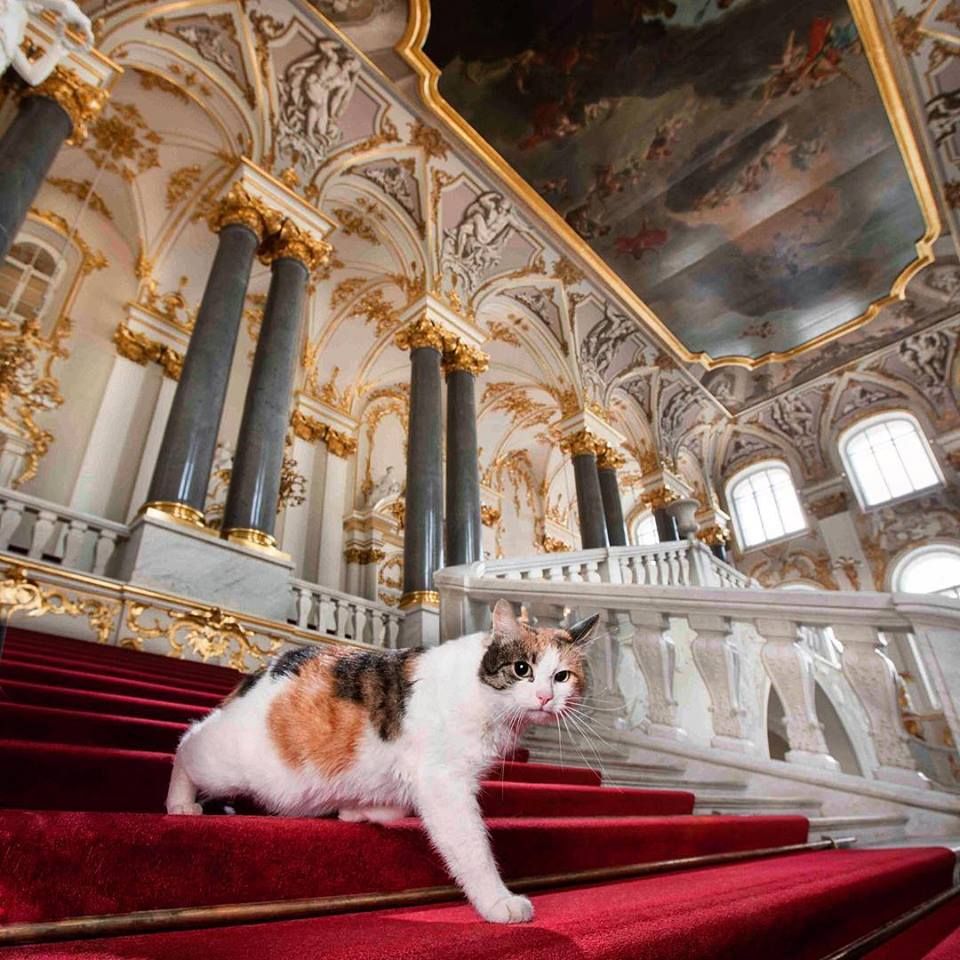Winding beneath the magnificent halls of St. Petersburg’s Hermitage Museum, with its Da Vincis, diamonds, Greek statuary, Egyptian parchments, enormous number of paintings, mechanical peacock clock, and other treasures, there is a concrete labyrinth of corridors, store rooms, service areas, courtyards and tunnels housing over 70 half-wild cats.
There have been cats in the Hermitage ever since the days of the Elizabeth Petrovna, except for the 900-day period of the Siege of Leningrad between 1941-1944, when residents were forced to eat whatever they could find and 1.2 million of them died, many of starvation.
The tradition of Cats at Court dates back to a 1745 decree of Empress Elizabeth, the daughter of Peter the Great, founder of St. Petersburg. In a bid to rid her palace of rats, she issued the order «to find in Kazan…the best and biggest cats capable of catching mice, and send them to… the Court of her Imperial Majesty, along with someone to look after and feed them, and send them by cart and with sufficient food immediately». The cats had to be male, and «treated».
This breed of Kazan cat may no longer exist, but we know that Catherine the Great favoured Russian Blues inside the palace, while putting common moggies to work in the basement. «My paintings» she once famously wrote to the Diderot in France in an attempt to entice the philosopher to visit her, «are enjoyed only by myself and the mice».
Today, 74 cats, of both (neutered) sexes, roam the underbelly of the museum, and three volunteers spend six hours a day underground, tending to their needs. There are kitchens for preparing their food («they all have different preferences»), and even a small hospital.
The cats are on the Hermitage account, and earn money through donations. Pro Animale, an animal charity, donates €400 a month for food and medicine. They are also sponsored by Royal Canin.
Visitors to St Petersburg can glimpse the Hermitage cats strolling about the museum’s courtyards or sunning themselves on the Neva embankment at the rear of the palace.
A visit to the Hermitage basement to see the cats is a rare privilege. The Hermitage holds only occasional events where the public has the chance to go downstairs to see the spaghetti-like utility pipes that seem to stretch for kilometres. Draped on the pipes are dozens of warm, well-fed felines. In fact, the basement seems to have a cat in every nook and cranny.
With so much pampering, one would wonder if the cats bother to work for their keep? «They don’t need to chase mice any more» says Maria, Assistant to the Museum Director, and PR to the famous felines. «Their presence is a deterrent in itself».
Visiting the Hermitage Museum would be the number one activity on any tourist’s itinerary travelling to Saint Petersburg. Yet, there is something more to the famous depository of art and history. The cats of the Hermitage is one more reason to visit the museum.
By Teresa Levonian Cole (The Telegraph)

